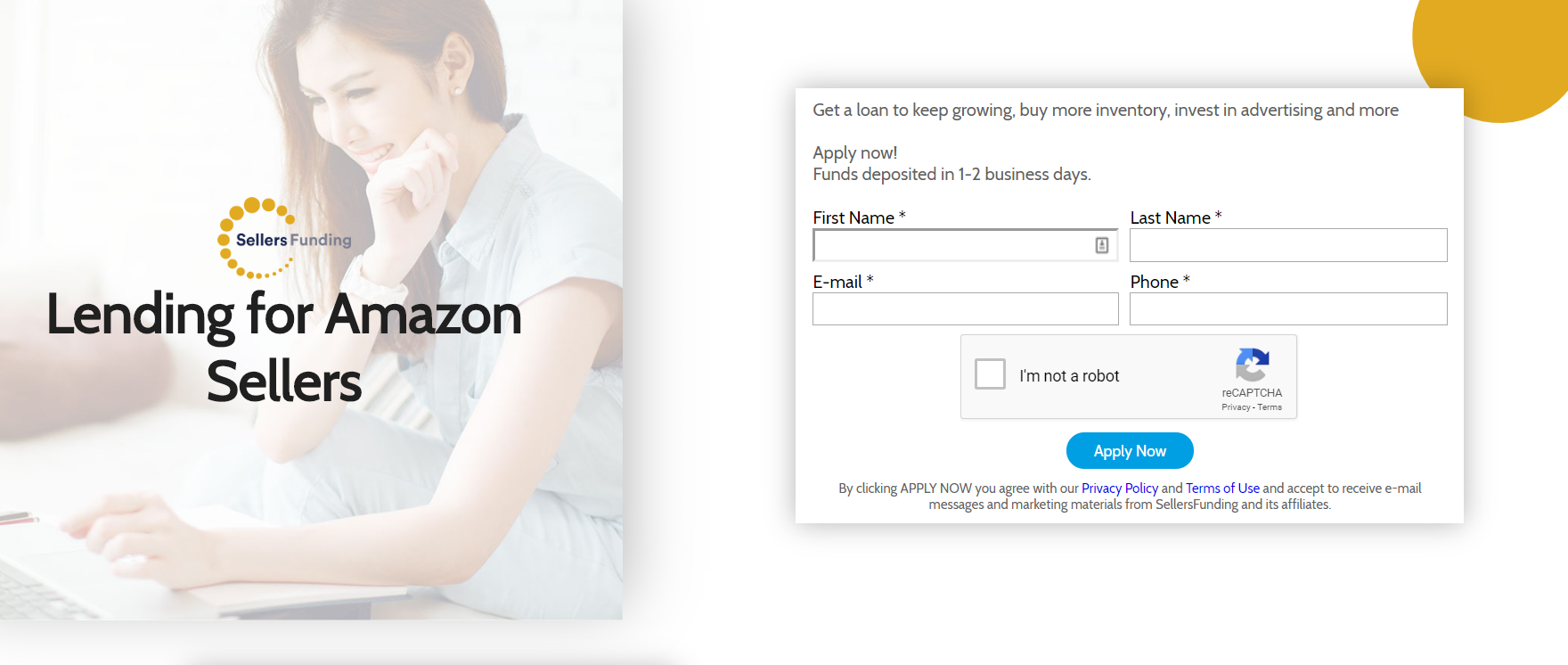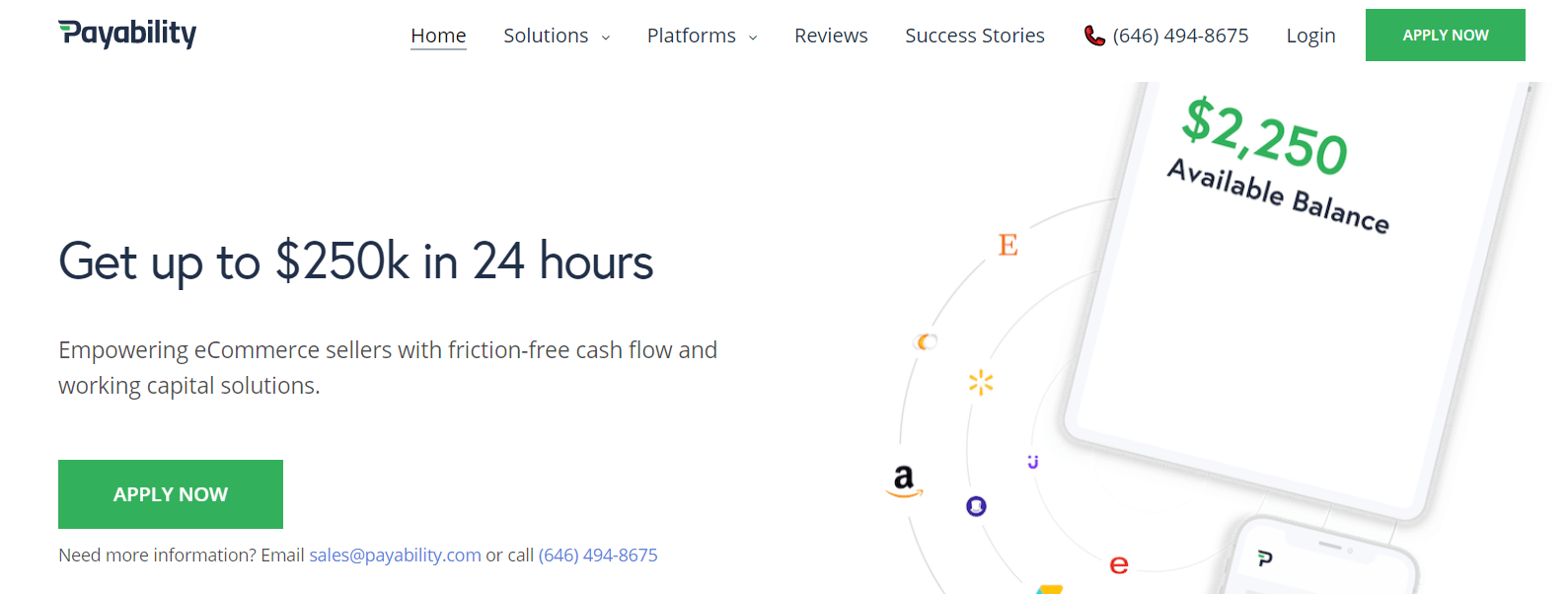Usually, Amazon sellers require funding when they are looking to expand their Amazon business through diversification by adding new products. However, in these uncertain times due to the coronavirus pandemic, you may need additional funds to get you through this challenging period.
Although you might experience an increase in Amazon sales initially as more people are online shopping, longer-term there could be an impact on supply chains and sellers who rely on retail arbitrage. If we experience a global recession as predicted by many, then consumers will be spending less on non-essential goods and sales for most sellers will decline.
Deciding when (and how) you want to obtain small business funding for your business is a big, but important, step. Getting funding before you have a steady revenue can hurt your business – you could find yourself in debt and unable to pay the loan back. But waiting too long for funding can hurt your business as well – you may miss out on potential growth opportunities or miss out on vendor deals.
Need an FBA Loan? Funding for Amazon Sellers
Unfortunately, Amazon sellers may face challenges when looking for financing. Traditional lenders may not know what do for a small online business or Amazon retailers. There aren’t many Amazon-specific loans (fortunately, Amazon offers small business loans, which we’ll dive into below!).
Most traditional lenders deal with brick-and-mortar businesses and require such collateral for obtaining funds. Even if your Amazon retail business is years-old or has shown a consistent record of sales, it still may be too difficult to qualify for a traditional small business loan.
It also may not be ideal to apply for such a loan, especially if you’re looking for smaller amounts. Most small business loans obtained through traditional lenders don’t fall under $100,000, as bigger loans are more profitable for the lenders. So, what are your options as an online seller?
Before you start digging into research, it’s a good idea to think like a lender (even non-traditional ones!). Here are some things to keep in mind:
- Review your credit score to help determine your risk level.
- Review your finances and business’s cash flow to help you determine if it makes sense to borrow funds and, if so, how much you can afford to borrow.
- Determine your goals for borrowing the money.
- Determine how quickly you need funds.
- Determine how long you need to pay back the funds.
So, if you’re ready to look for outside financing, here are five funding options for your Amazon business.
1. Amazon Sellers Funding

Fortunately, Amazon sellers can find a funding solution on SellersFunding, which uses an artificial intelligence algorithm to leverage your Amazon Store performance for qualification. The requirements for qualification include having at least six months of sales history on Amazon with sales at least $30,000 during that period (or, an average of $5,000 per month). Your business also must be in good standing with Amazon.
The application takes five minutes, during which you can ask for a certain amount to grow your business. Amazon also offers a 90-day grace period before you have to start paying back your loan. If you’re approved, you can see the funds in 1-2 days. And after paying back 50% of your outstanding balance, you’re eligible for a new loan.
Rates for SellersFunding vary from 14.99-24% APR, with no hidden fees or pre-payment penalties. Amazon requires personal guarantees rather than collateral, and, while it does look at credit, there is no minimum score required. Rather, it’s in combination with other factors to look at the overall health of your business.
2. Lines of Credit
If you don’t qualify for SellersFunding, need more than offered or need quicker capital, lines of credit are another option for your business. Like Amazon, most online lenders look at a variety of factors to determine the health of your business (including any services you use like PayPal, Intuit, Square, etc.). Requirements usually include being in business for at least one year and having at least $50,000 in business revenue annually.
With lines of credit from online lenders, you can apply online in minutes (and receive approval just as quickly!). Approval doesn’t mean you’re obligated to take the funds, however. You can keep this funding in your back pocket for whenever your Amazon business needs it and only take funds when you need to. You only pay back what you borrow, when you borrow it.
Most online lenders offer simple monthly fees ranging anywhere from 1.5 to 10%, with APR ranging from lender to lender (and based on your business’s overall health). Many lenders offer no prepayment penalties and terms ranging from 6 to 18 months.
Related: Learn more about Amazon Lending
3. Merchant Cash Advances (MCAs)

Merchant cash advances are another way to gain access to funds as soon as you need them. In fact, one of the biggest advantages of MCAs versus other lenders is the speed of obtaining funds if approved. In some cases, some capital can be delivered within hours of applying and being qualified!
Like SellersFunding and lines of credit, MCAs can be applied for online and require little-to-no paperwork. They also don’t look at your credit score as the sole factor for approval, and there’s no collateral required to take out a merchant cash advance.
However, interest rates tend to be higher, due to the unregulated industry and especially if your credit score isn’t as strong as it could be. Fees also vary upon company to company, so it’s important to determine how much you’ll be paying back before agreeing to any terms.
4. Peer-to-Peer Loans (P2P)
With peer-to-peer lending, you don’t submit an application to a lender (traditional or non). Instead, you create a profile on a P2P website, which is reviewed by investors. If they like your profile, they may offer you funds.
Again, credit scores are not the sole factor in determining if your Amazon business is qualified for funding. The platform does require you to include information about your credit score and debt-to-income ratio, but each lender does this differently. Some may show your credit score while others can assign ratings (i.e. “A”, “B” or “C” to borrows). However, while your profile Is public (so investors can see them), your real name isn’t used, which ensures your privacy and security.
Along with your credit score, you should include why you need a loan, which should be clearly defined. Investors want to know why you need funding and what you plan to do with it. A clearly defined reason and goal is more enticing as they’ll feel more secure lending you money when you know what to do with it.
A big advantage of P2P loans is that you don’t have to take out any loan you’re offered. You can review the interest rates and terms of each to find the best fit for your business. This is generally referred to as the “auction process” of P2P lending. However, because investors are bidding on your business, approval and funding time varies widely. Being offered funds can take anywhere from a few minutes to even a few days or weeks.
5. Factoring
Factoring is typically a cash flow management tool used by businesses when other financing options aren’t available. With factoring, you sell your accounts receivable to a financing company for fast cash. The amount you receive usually ranges between 75 -80% based on a variety of factors (including the age and quality of the receivables). Once the receivables are paid off, you’ll get the difference between the face amount of your invoices and the amount the company kept in reserve (minus a fee).
Factoring means quick cash with no required collateral, which is appealing to a lot of small business owners. However, the costs can be higher than other options, with factoring companies keeping between 1-4% of a receivable as a fee. Additionally, they may charge interest on the cash advances, typically at least the prime rate plus 1-2%. When you add this to the month-to-month costs, you could be paying more than 30% in annual interest.
The rates also largely depend on your clients – not you. If you have slow-paying clients or ones with bad credit, you may be paying more to the factoring company. Or, you may receive a lower amount of capital upfront.
It’s also important to ensure the factoring you’re using is legal. Factoring is a legal process, which means you could end up in grey territory depending on the business. As an online seller, your accounts receivable should show billing for items processed and shipped. If it shows just processed, it could be considered fraud. With factoring, it can be beneficial to consult legal counsel before proceeding.
6. Payability

Payability provides financing solutions designed for the unique needs of Amazon and ecommerce businesses. Their solutions include Instant Advance (capital advances of up to $250,000) and Instant Access (accelerated daily payouts for sellers paid on terms by marketplaces such as Amazon). Approval for Payability is based on account health and sales performance, so there are no credit checks and no complicated paperwork, simply connect your store and get an offer within 24 hours.
Some of the biggest advantages of working with Payability are that their products are debt-free and equity-free. An Instant Advance is not debt, but a purchase of your future sales, while Instant Access makes it easier to self-fund by giving you your own revenue faster and protects you from late marketplace payouts such as an Amazon Account Level Reserve. Payability works well alongside other financing options like Amazon Lending and Shopify Capital.
Final Thoughts
Getting a loan can be scary, but it’s nothing to run from. Having additional capital can help you grow or better manage your Amazon store even beyond your projections. When you’re looking for financing to take your Amazon store to the next level, it’s important to dig into the proper research before choosing an option.
You need to consider what you need the capital for, how soon you need it, how much you need and if you can pay it back (and how long it would take to do so). With these options in mind, conduct your research and find the best fit your for your Amazon business.






